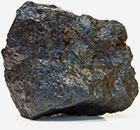Quality Magnetite Exploring Nano-Particle Medical Markets

Equipment advances will enable the creation of smaller, uniform magnetite particles
Quality Magnetite is poised at the forefront of an exciting and revolutionary new field of medical research and treatment. Magnetic Resonance Imaging — or MRI — is one of the most remarkable medical imaging tools ever created, and researchers believe that magnetite nanoparticles could take MRI to even greater heights.
By employing iron oxide nanoparticles as contrast agents, scientists anticipate using MRI to reveal the very shapes of cancer cells themselves. For these advances to become reality, ferrous oxide (FeO) particles must be uniform and incredibly small, which requires specialized equipment and cutting-edge manufacturing and quality control techniques. Quality Magnetite is keeping a close eye on the medical imaging industry as we consider this explosive new field of research.
“Right now, these techniques are still in the testing phase, but that could change at any moment,” says Quality Magnetite Operations Manager George Hamilton. “As one of the premier sources for quality, refined magnetite, we’re well-positioned to become a major provider of ferrous nanoparticles for medical imaging and contrast.”
Researchers have identified some of the benefits of magnetite for MRI, and as the science behind this emerging technology develops, here are just a few of the reasons these innovations are worth watching.
Magnetite imaging contrasts improve accuracy and detail
MRI machines use powerful magnetic fields to discern the subtle differences among tissue density, which allows radiologists to explore tiny slices of an individual’s anatomy, looking for everything from aneurysms to tumors. The paramagnetic properties of ferrous materials can improve the resolution of MRI machines because of the material’s unique properties and density.
Through the manufacture of high quality, uniform and uniquely shaped particles, scientists believe that magnetite will allow them to explore the shapes of tumors, improving radiation and chemotherapy treatments or allowing for more effective surgical solutions to invasive cancers. Also, because of some iron compounds’ unique interactions with certain compounds in blood and tissues, these ferro-particles may allow radiologists to diagnose and describe vascular conditions in much greater detail than ever before.
Biodegradable and biologically safe compounds decrease need for potentially toxic radiological or dye-based contrast agents
Current state-of-the-art contrast agents utilize potentially harmful substances, such as dyes and radioactive tracer elements, to improve resolution in MRI images and bring out hidden structures. Certain ferrous nanoparticles are biodegradable, however, and these tiny particles can be designed to move more freely throughout structures of the body.
Researchers believe these tiny compounds can one day be used to successfully diagnose and treat a host of cardiovascular and even neurological conditions, reducing or even eliminating the need for radioactive tracers and heavy, potentially toxic dyes. Magnetite nanoparticles are at the forefront of an amazing new frontier for medical imaging, and Quality Magnetite will be there to supply this need.
Learn more about Quality Magnetite
Discover more about Quality Magnetite and the hundreds of innovative applications for our magnetite products through our information portal. Or, if you have questions, you can contact us today.

